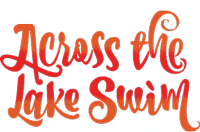DEALING WITH EVENT DAY NERVES
The Causes:
So, you are feeling a little anxious swimming in open water? For most athletes, a little dose of anxiety or "pre-race jitters" is a good thing, as it sharpens the focus of the task at hand, and provides some adrenaline to give you some added fight, as per the "fight or flight" response. Yet too much anxiety can impair performance, and is a common problem for swimmers at all levels of experience, and for you to overcome it, you first need to understand why you have it, and then develop some strategies to neutralize it.
There are distinct differences between swimming 2000 meters in a pool and swimming the same distance in open water; if you are new to open water swimming, this can lead to decreased confidence in your swimming, with a corresponding increase in anxiety. What are the sources of this anxiety, and what can you do about it? First, a list, and then, the strategies to overcome them.
Lets start by calling a spade a spade. Here are the increased stressors of open water swimming:
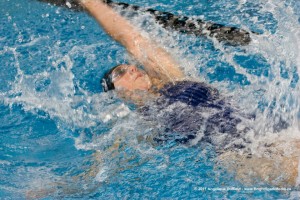 1) In a pool, you are never far from a lane rope, the pool’s edge, the pool bottom, other swimmers, or a lifeguard. In open water, you do not have these securities, so you need to believe in your swimming abilities more, and have faith in your ability to remain calm and functional in any circumstance.
1) In a pool, you are never far from a lane rope, the pool’s edge, the pool bottom, other swimmers, or a lifeguard. In open water, you do not have these securities, so you need to believe in your swimming abilities more, and have faith in your ability to remain calm and functional in any circumstance.
2) In a pool, you have defined depths, some of which are shallow enough to stand comfortably; the rest has limited depths that you can see easily and grow comfortable with that. Lakes, rivers, and oceans provide you no such assurances, although you will come to realize that the depth of the water is irrelevant to most swimming, unless you are diving.
3) Pools have discreet borders that are easy to encapsulate in your mind with a quick glance, while open water can appear expansive, without a clear sense of distance.
4) Pools also provide you a clear sense of direction, with lanes marked by dark blue lines at the bottom of the pool, to allow you to quickly correct any tendency to swim off course. Open water swimming requires the development of good sighting techniques to swim straight.
5) Well demarcated lanes also mean there is hardly ever any body contact with other swimmers, unlike in open water races, especially at the start, which can be chaotic. The feeling of random and repeated contact in the water by other swimmers is not generally comfortable even for experienced swimmers. 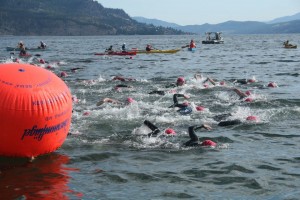
6) In a pool, the water temperature is constant, predictable and comfortable, as well as being clean and clear. Open water can be cool or downright cold, have an unfamiliar taste, may be brackish or salty, may be green, grey, blue or brown, and may have significant particulates or silt, limiting visibility.
7) And then there is the issue of what is in the water. While pools are generally sterile, chlorinated, and free of debris, open waters are vibrant, with floating debris, birds overhead, and fish below. Unlike a pool, the bottom can be sandy, rocky, muddy, weedy, scenic, or not visible. For some, this variablility takes some getting used to.
8) What is on the water is also an issue in open water swims. Boats, kayakers, sailboarders and stand-up paddlers are all sharing the water with you, and leave you wondering how vulnerable you are to getting run over, a concern that does not exist in a swimming pool. This is why we and other open water swims encourage brightly coloured swim caps, and now, inflatable "Swim Buddy's."
9) There are also weather factors that do not exist in a pool. Wind, waves, currents, bright sunlight, changing air temperatures, lightning risks, poor visibility and darkness are all added variables in open water swimming. You need to be aware of what, if any, weather risks there are prior to going for an open water swim.
10) Swimming races and training in a pool are tightly structured, with a single swimmer per lane; even in training, this number is tightly controlled, to minimize body contact. In open water there is much less control, with hundreds of swimmers in the water at once, and much more contact possible.
11) Unlike the pool setting, most open water swims encourage the use of wetsuits, which is a new piece of equipment that takes some getting used to; some find them tight or restrictive, even hard to breathe if they are not properly fitting. Yet they also provide safety in the form of buoyance and warmth, and usually enhance swimming by improving body position. Learn how to put it on properly to give you good shoulder mobility, and make sure your wetsuit fits you properly. Spend time in it regularly ahead of your swim events. Your wetsuit is your friend!
So, if you are new to open water swimming, there is little doubt that you will be quickly confronted by most of these variables, each one of which pushes you a little farther away from your swimming comfort zone. Some may get overwhelmed by several of these variables, and the result is…..anxiety.
The Solutions:
So, how do you lessen swim anxiety?
First, ask yourself which of these factors are most significant in your mind, and focus on those in particular. In general, though, the more time you spend in open water swim environments, the more comfortable you will be with open water swimming.
1) Get to know all the safety resources available to you during the race (see the list appended below)
2) Be committed to developing the fitness and swimming abilities necessary to do this swim. Take advantage of the free swim clinics included in your registration at the Gyro Beach Swim Loop 6 consecutive Saturdays before the event. Get into the open water - lots!
3) Practice swimming in adverse but safe conditions—choppy water, cold water, windy days, sunny days, rainy days; all are possible on the day of the Interior Savings Across the Lake Swim.
4) Get used to swimming in groups—go with several friends, and get comfortable with occasional contact in the water, and swimming beside others. This is a good way to learn drafting and sighting as well, since there will be swimmers that will deliberately follow your feet or swim closely beside you during open water swim events.
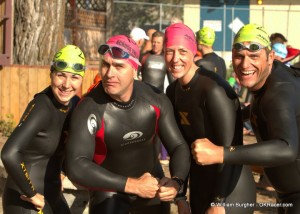 5) Get comfortable with your wetsuit and your goggles, and make sure they are properly fitted for you. Do NOT change your equipment on the day of the event if at all possible - stick with what you know works.
5) Get comfortable with your wetsuit and your goggles, and make sure they are properly fitted for you. Do NOT change your equipment on the day of the event if at all possible - stick with what you know works.
6) Remember that your wetsuit makes you buoyant. Try diving down 5-6 feet of water and try to sit on the bottom—you will bob up like a cork. You have effectively a personal floatation device on you when you wear a wetsuit.
7) Remember that, if need be for any reason, you can rest at any point on your swim, by treading water easily or floating on your back while your wetsuit holds you up. Just swim off to the side of the swim pathway to clear the way for any other swimmers who may be behind you. If you need help, just wave to nearby watercraft or lifeguards.
8) Staying calm is your best strategy for a successful swim. We emphasize that this is not race, but an event, a rite of passage, that does not require you to go fast. You have 90 minutes to complete the swim, which is more than double what most people take. So, relax! Take your time, and don’t be preoccupied by your expectations. You can never control what the event day doles out for you.
9) Recognize that breathing is the most important part of swimming, and when that is not going well, it is the most likely trigger to hyperventilating, anxiety and panic. Cold water hitting your face reflexly may cause you to hold your breath, and may make it hard to take full expirations into the water, hence the need to do some warm up swimming. These are normal reactions that you will grow comfortable with the more you swim in open water, but requires extra time to adapt and prepare when starting an open water swim, compared with the ease of entering a pool environment. Learn to breathe in a variety of patterns (every 2, 3, or 4 strokes) to accommodate your swim needs and the choppiness of the water. If necessary, reset your breathing by going more slowly, taking a few deep clearing breaths, or stopping long enough to get your breathing back to normal. Learn how to breathe near the top of a water crest, by feeling the rocking of the waves, then timing your breath by altering your breathing cadence or extending the glide portion of a stroke.
10) On the day of the Interior Savings Across the Lake Swim, we have seeded you roughly according to your ability (remember we asked you how long it would take you to cross when you registered?), to keep swimmers of similar abilities together. You will be swimming with about 100 other swimmers in your wave, and within that group you can further position yourself where you are most comfortamble, whether by staying behind the front row of swimmers, off to one side, where support paddlers are, or even allowing yourself a delayed or slow start.
11) If, for any reason, you do not feel well for whatever reason (dizzy, fever, nausea, allergy symptoms, significant cold or flu symptoms, hangover, uncontrolled anxiety, headache, shoulder pain, tachycardia, etc) on the day of the event, you need to consider that today may not be your best day for this swim. Please advise one of the Interior Savings Across the Lake Swim officials and hand in your timing chip and cap. We will gladly rollover your registration to next year. Do not let others tell you that you should swim if you are not feeling well—you are the expert of how you feel.
12) Have a plan for the day of the swim, and practice it prior to the event. This will include how you warm up, how you acclimatize to the cooler water, how you pace yourself in the early and middle parts of the swim, how you avoid falling into the trap of following others’ pace that may not be suitable for you, and even what foods or snacks you eat pre-event.
13) Avoid nicotine, caffeine, recreational drugs, and large amounts of sugar or food prior to the swim. You don't want to be in digestion mode while swimming!
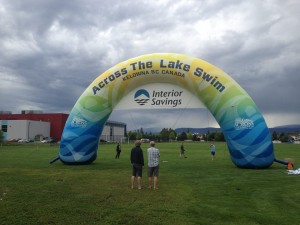 14) Become familiar with the important land marks defining the swim. On the morning of the Interior Savings Across the Lake Swim, check out the correct line of sight, including the finishing arch, the trees above that, the mountain pattern behind that, and how this relates to where the sun is in the sky. Also check out what is on the left and the right of the swim path—buildings, bridges, etc.--these are things that you will need to correct away from if you start sighting these during your swim.
14) Become familiar with the important land marks defining the swim. On the morning of the Interior Savings Across the Lake Swim, check out the correct line of sight, including the finishing arch, the trees above that, the mountain pattern behind that, and how this relates to where the sun is in the sky. Also check out what is on the left and the right of the swim path—buildings, bridges, etc.--these are things that you will need to correct away from if you start sighting these during your swim.
15) Develop some mental resilience with positive self-talk, and learn some simple relaxing breathing techniques that can settle you down when feeling anxious. Yoga can help with calming your mind and using breathing as a tool to relax. Thinking logically is much easier when not feeling panicky.
16) Be assured there are no monsters from the deep that are going to get you. Most fish and waterfowl would be trying to avoid you, not attack you! And the water is not out to get you. Learn to flow with it, and not fight it.
17) To improve your visibility in the water, we require all participants to be wearing a brightly coloured swim cap, and we encourage you to consider using a “Swim Buddy”.
18) Have an “escape plan” of sorts if things are not going well. If you swallow water, or are coughing, or are anxious or panicky, stop swimming, roll onto your back to make breathing easier, turn to face any swimmers that might be coming your way, and work at calming your breathing down. Find a posture that you can practice before hand in safe conditions that you can call your “happy place”. If you can resume your swim do so at a pace that is comfortable and manageable, with stops as needed. If you are unable to proceed, wave to the nearest watercraft for assistance.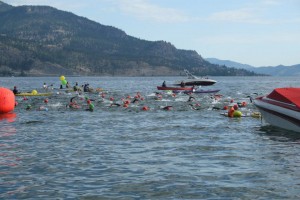
19) On the morning of the swim, do some warm up!! Getting water in your wetsuit will be a slight shock at first, but once you have warmed it up, becomes your wet insulation for the Swim, so do this BEFORE your event starts… One less shock to the system. Warming up your shoulders, get a feeling of your breathing rhythm, getting comfortable with the water temperature, the waves, your goggles, and your wetsuit are all best done BEFORE the Swim.
20) Ease into your “race pace”. Your heart does not like going from a resting pulse one minute, and race mode the next. Combine that demand with the “diving reflex” that cause people to hold their breath and slow down their heart with the application of cold water to their face, the possible added effects of ingested caffeine, and generalized race-associated anxiety, it is easy to see some swimmers becoming short of breath after just a few hundred meters of swimming. Pace yourself, and time your warm up to help this.
21) Good sighting is essential to a safe swim and to be able to finish your event in a timely fashion. Learn how to do this in both flat water and choppy conditions. Consider practicing with some water in your goggles, and even commando style, without goggles (goggle straps sometimes break, and some fall off—remember that goggles have only been used for a few decades). Also try clearing your goggles while swimming on your back.
22) Most excess anxiety is related to your fears and your perceptions; change your fears and your perceptions, and your anxieties melt away. Young children can be easily trained to be water smart, skillful and safe in the water, to the point where they love being in it. There is no reason adults cannot get to this point with recurring exposures to open water. A little bit of anxiety is good to work with to even enhance your swim. Just learn how to control it and make it work for you. For some, and with practice (both swimming and yoga/meditation), this can become a “zen-like” experience.
23) Know thyself, and your limitations. Stay within your capabilities. Be able to accept that, on any given day, you abilities may not be up to par, and that it is okay to decline the opportunity to do this or any event. Don’t force fit your bucket list onto your body if it is not truly ready for the challenge.
Safety Enhancements of the Interior Savings Across the Lake Swim:
Of course, swim safety and enjoyment are the mandates of our open water swim event. While we expect every swimmer to have the swim abilities, commit to a swim training program to do this event, and follow the guidelines we have provided on our website and in the event packages, here is a list of what the Across the Lake Swim Society is doing to provide a safe environment for the Swim:
1) A 6-week open water swim training program at Gyro Beach on the weekends leading up to the swim, free to all participants.
2) Open registration early in the year to promote early training.
3) White caps for anxious swimmers.
4) We spread out swimmers at the start and keep swimmers of similar abilities together.
5) Wetsuit use is encouraged for warmth and buoyancy.
6) Optional use of “Swim Buddies” for improved safety and visibility.
7) Lifeguards on the water during the event, along with power boats, and multiple kayakers and stand up paddlers.
8) Improved sighting with large buoys and a huge finishing arch.
9) A long list of open water swim tips on the our website.
10) Swim orientation provided on the website, at the swim clinics, at package pickup and in the race packages.
11) Wetsuit and Swim Buddy demos available at the swim clinics.
12) RCMP boat protection on the south flank of the swim to protect against power boats unwittingly crossing under the bridge onto the swim’s path.
13) Notices at all marinas and boating centres in the area to increase awareness of our event.
14) Large signs hang from the south side of the bridge warning boaters of the event on the other side of the bridge.
15) A comprehensive safety and extraction plan has been developed between our Safety Officer, the Head Lifeguard, and BC Ambulance.
16) Lifeguards are onsite both at the start line and at the finish line on the morning of the event.
17) We do not use a start gun, so as to minimize the startle response in some swimmers, and to reduce the adrenaline surge that may come as a result.
18) Lots of post race snacks, rehydration, and massage is available. 
19) Option to have your own Support Person either in a kayak, canoe or stand up paddle board.
20) We focus on the swim as an "event" not a "race."
21) Encourage swimmers to ask questions at the open water swim clinics, package pickup and through the weeks and months leading up to the swim.
Printer-friendly version: Download here
